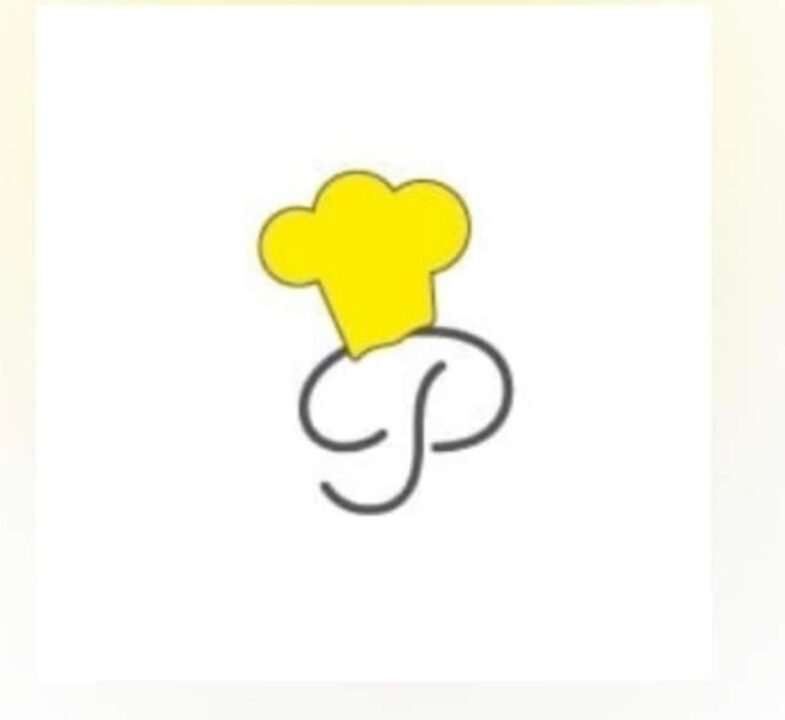Spaghetti with mullet ragu Lampedusana style or, if you prefer, mullet ragu with wild fennel and toasted breadcrumbs. My recipe is Lampedusana, or rather Sicilian, with pine nuts, capers, and breadcrumbs: it couldn’t be otherwise. The mullet is a highly regarded and well-regarded fish. The name seems to originate from a folk belief that it reproduced three times a year, but in reality, the breeding period is between May and August. The ideal period for consumption is from late summer until December. We know two types of mullet: mud mullet and rock mullet, but nutritionally, their origin doesn’t make a difference. Both are lean fish with very delicate flesh and just over 123 calories per 100 grams. Among many, one of the highly appreciated dishes in Italian cuisine is Livorno-style mullet, a typical Tuscan main course, although there are many recipes, such as the Sardinian style with an herb-based seasoning. You certainly won’t find a mullet ragu Lampedusana style like any other, although this dish is very similar to Palermo-style pasta with sardines. In fact, they are very similar, and it’s said that in Lampedusa, when sardines are scarce, this dish is prepared with mullets. Saying it’s delicious is an understatement, so to be sure, I invite you to prepare it.
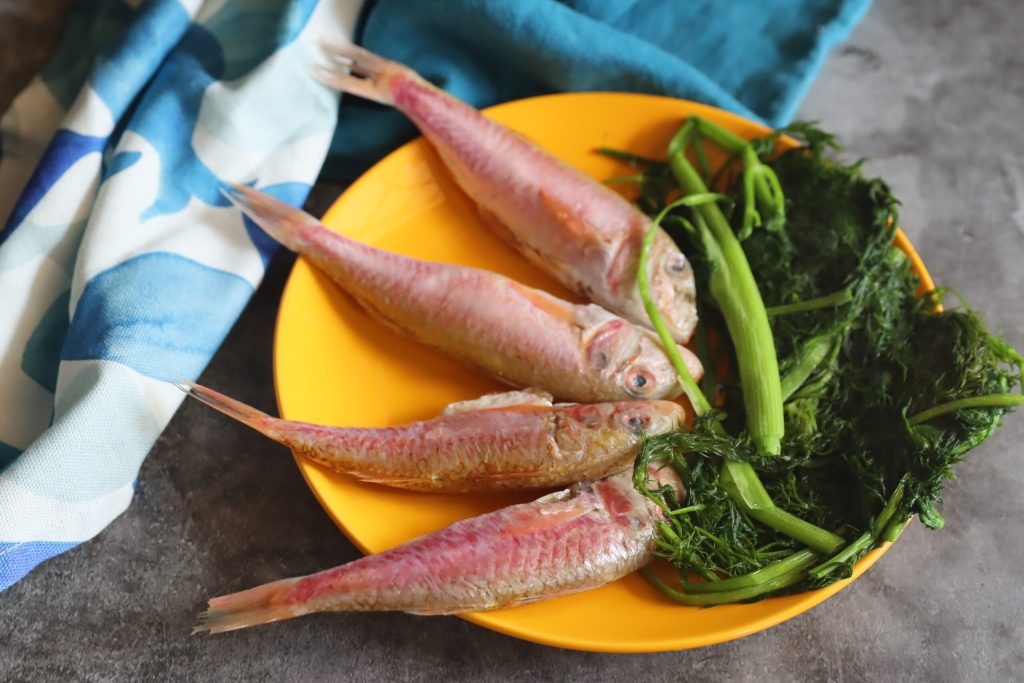
- Difficulty: Medium
- Cost: Economical
- Preparation time: 40 Minutes
- Portions: 2
- Cooking methods: Stovetop
- Cuisine: Italian
- Seasonality: Fall
- Energy 347.21 (Kcal)
- Carbohydrates 24.21 (g) of which sugars 2.34 (g)
- Proteins 17.99 (g)
- Fat 20.20 (g) of which saturated 3.12 (g)of which unsaturated 3.78 (g)
- Fibers 2.33 (g)
- Sodium 1,988.85 (mg)
Indicative values for a portion of 220 g processed in an automated way starting from the nutritional information available on the CREA* and FoodData Central** databases. It is not food and / or nutritional advice.
* CREATES Food and Nutrition Research Center: https://www.crea.gov.it/alimenti-e-nutrizione https://www.alimentinutrizione.it ** U.S. Department of Agriculture, Agricultural Research Service. FoodData Central, 2019. https://fdc.nal.usda.gov
Ingredients needed to prepare spaghetti with mullet ragu
- 9 oz mullet
- 3.5 oz spaghetti
- 2 tbsp wild fennel
- 1 tbsp breadcrumbs (from fresh bread)
- 2 tsp garlic
- 1 tbsp pine nuts
- 1 oz tomato paste
- 1 tbsp salted capers
- 2 tbsp extra virgin olive oil
- 1.5 tsp salt
Useful tools for preparing the spaghetti
- Pan
- Skillet
- Tongs
Steps to prepare the spaghetti
First, wash the mullet thoroughly under running water. Then, with scissors, remove the fins, head, and guts. Scale them by scraping the mullet from tail to head. With a sharp knife, make a cut from the tail to the head along the back to gently remove the bone. Of course, remove any remaining bones using fish tweezers. Now flip the mullet and repeat the operation gently on the other side. I know for sure that some fishmongers sell ready-to-cook fish fillets, even mullet, already deboned or they debone them on the spot.

While my trusted and home fishmonger cleans the mullets, I toast the breadcrumbs in a pan without adding anything else. Ideally, you would use fresh breadcrumbs, but if you can’t find any, you can make your own by grinding fresh bread crumbs from durum wheat bread, which is more compact.
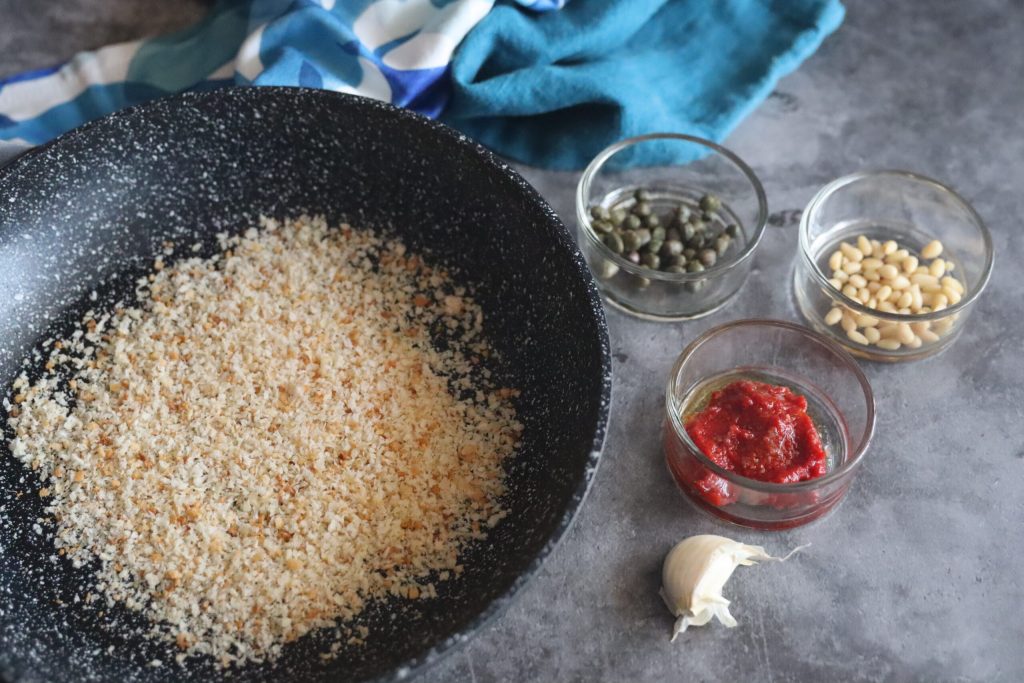
Let it brown, but be careful: only for a few minutes, otherwise you risk burning it.
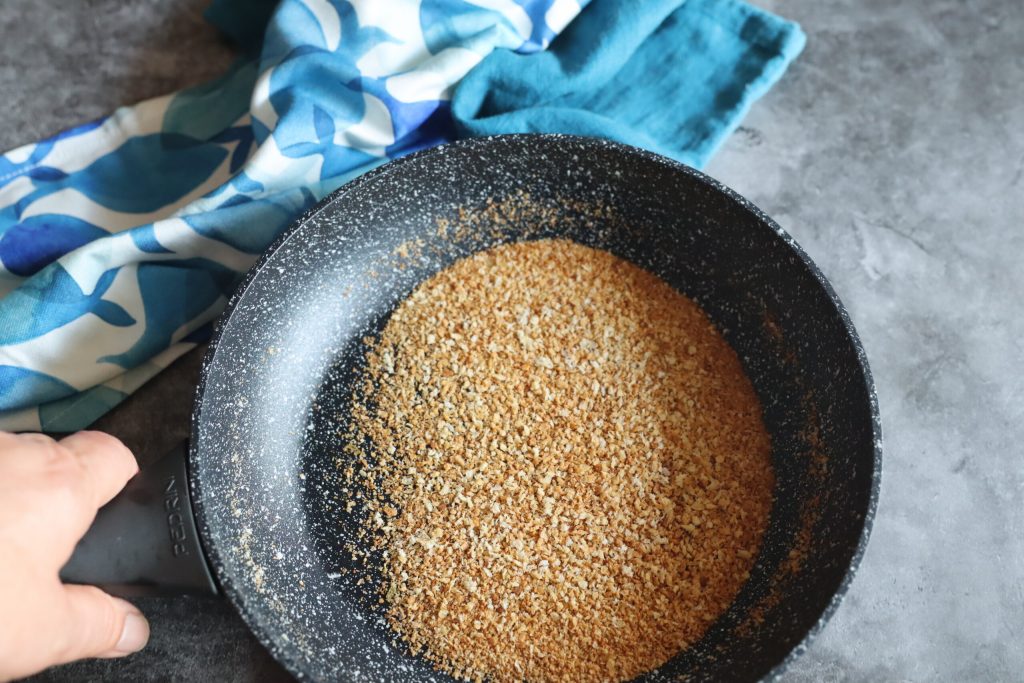
In the skillet, put the chopped garlic, a few pieces of chili pepper with the oil, and some sprigs of wild fennel.

Add the capers washed from their preserving salt and the wild fennel blanched for 3 minutes and chopped.

Brown everything over low heat, add the pine nuts and the tomato paste dissolved in half a glass of hot water.
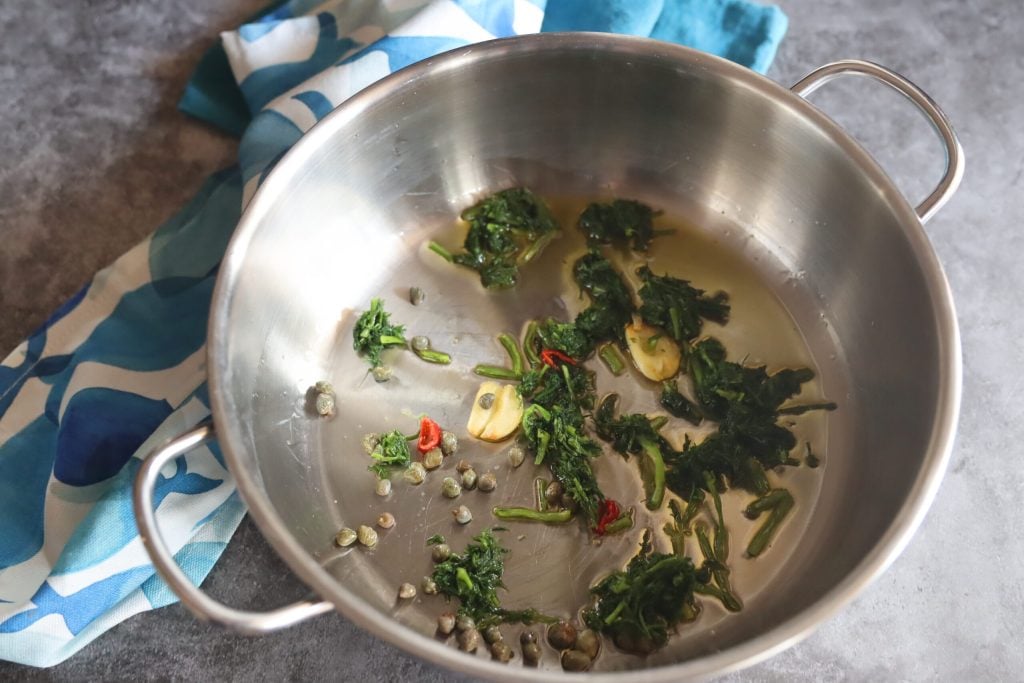
Now add the mullets cut into pieces for another 5 minutes.

Cook the spaghetti al dente in plenty of salted water and mix them in the skillet with the mullet ragu along with half of the toasted breadcrumbs.
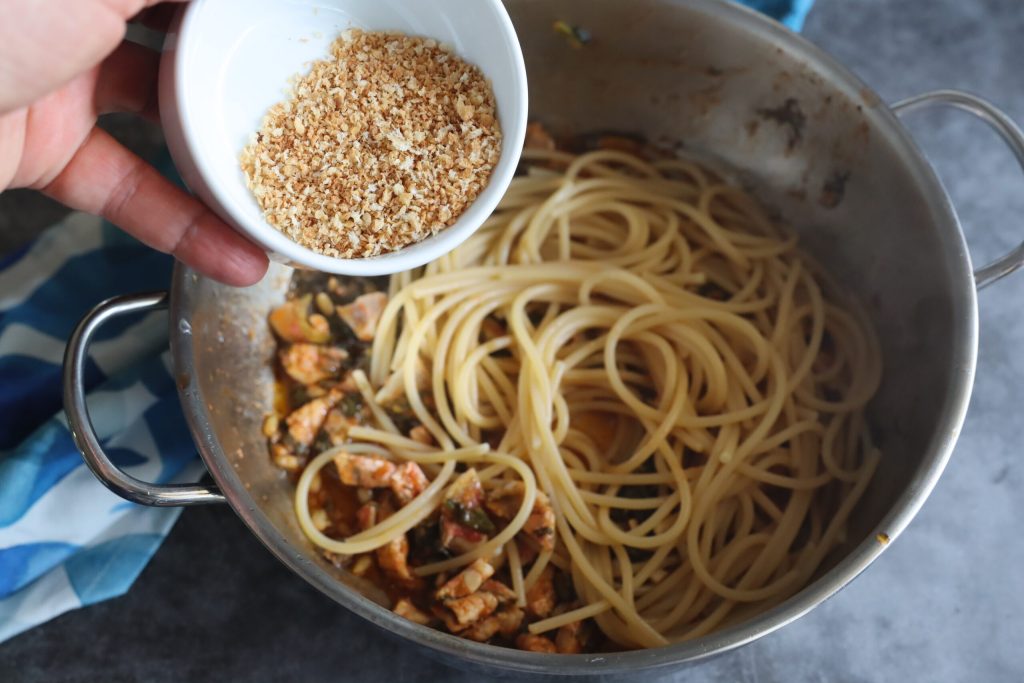
Stir for a few more seconds and serve the spaghetti and mullets Lampedusana style with the other half of the toasted breadcrumbs.

If you like, you can add fresh parsley leaves.
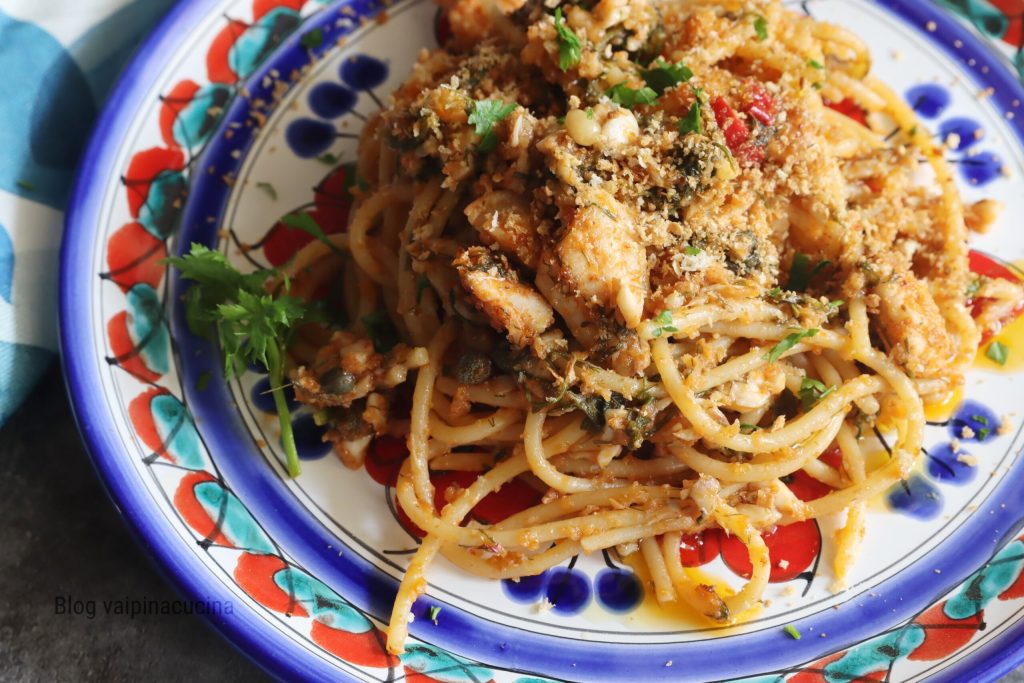
In this recipe, I didn’t use raisins, but if you want, they go very well.

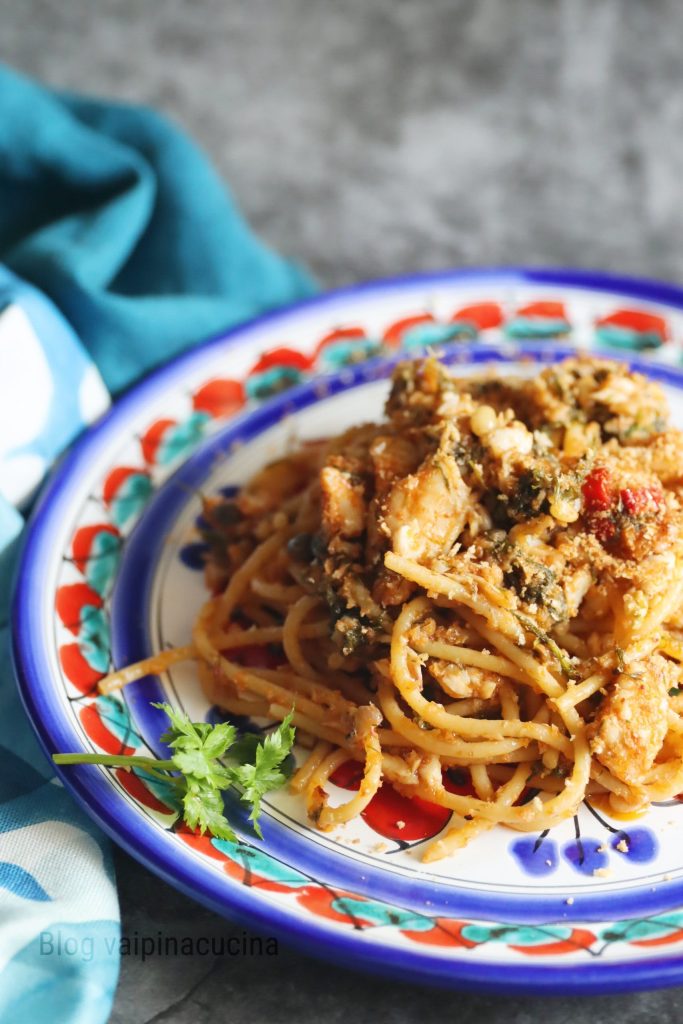
Advice
Here’s a tip on how to prepare lemon mullet fillets
https://blog.giallozafferano.it/vaipinacucina/ricetta-cotolette-di-triglie-al-limone/
https://blog.giallozafferano.it/vaipinacucina/ricetta-cotolette-di-triglie-al-limone/
https://blog.giallozafferano.it/vaipinacucina/ricetta-cotolette-di-triglie-al-limone/
FAQ (Questions and Answers)
How can you distinguish a mud mullet from a rock mullet?
The mud mullet is small, measuring around 4-8 inches, while the rock mullet is larger and exceeds 8 inches.
Why are they called mud mullets or rock mullets? What’s the difference?
The mud mullet lives in sandy or muddy seabeds, hence the name. The rock mullet, on the other hand, lives in rocky or gravelly seabeds at shallow depths.

